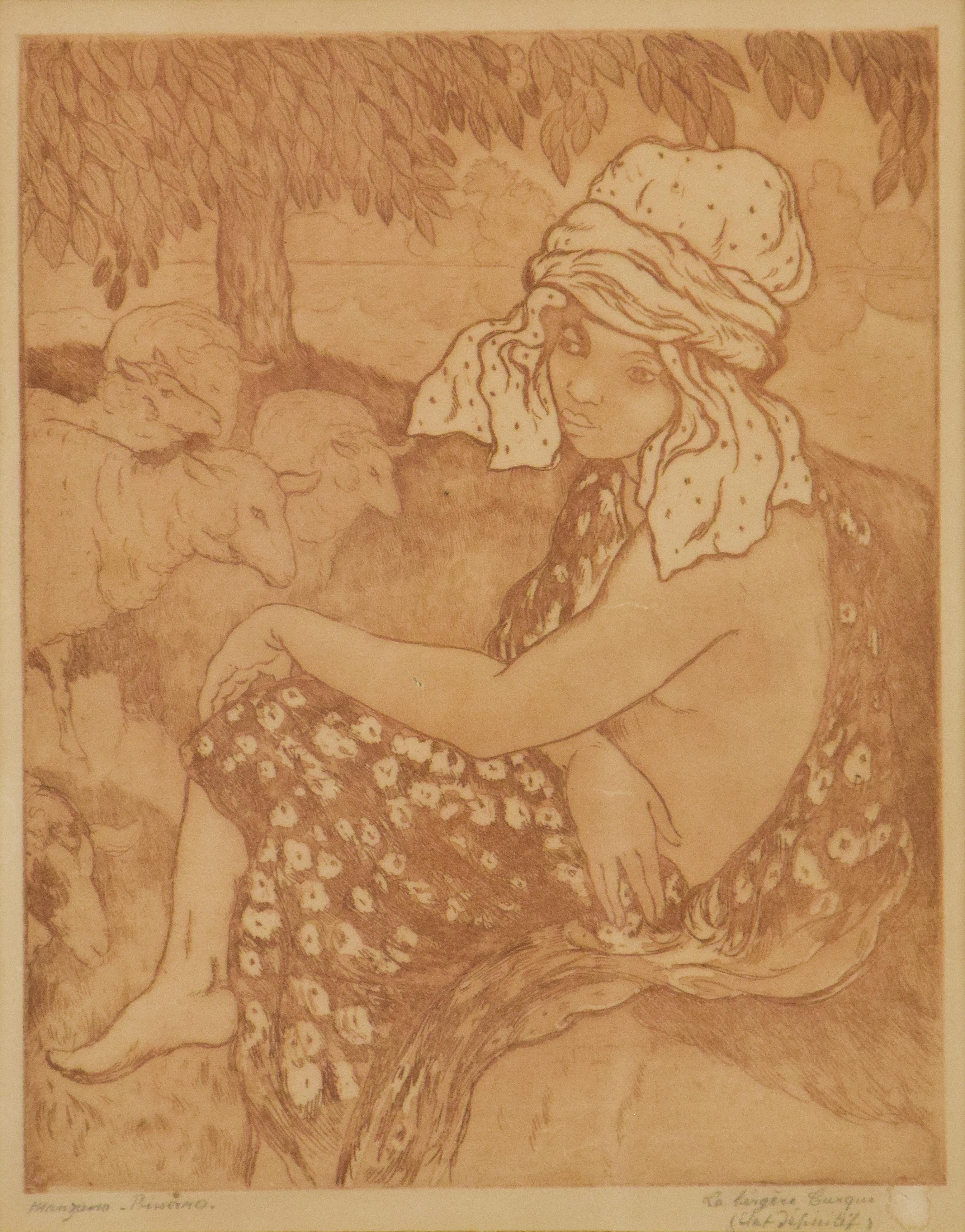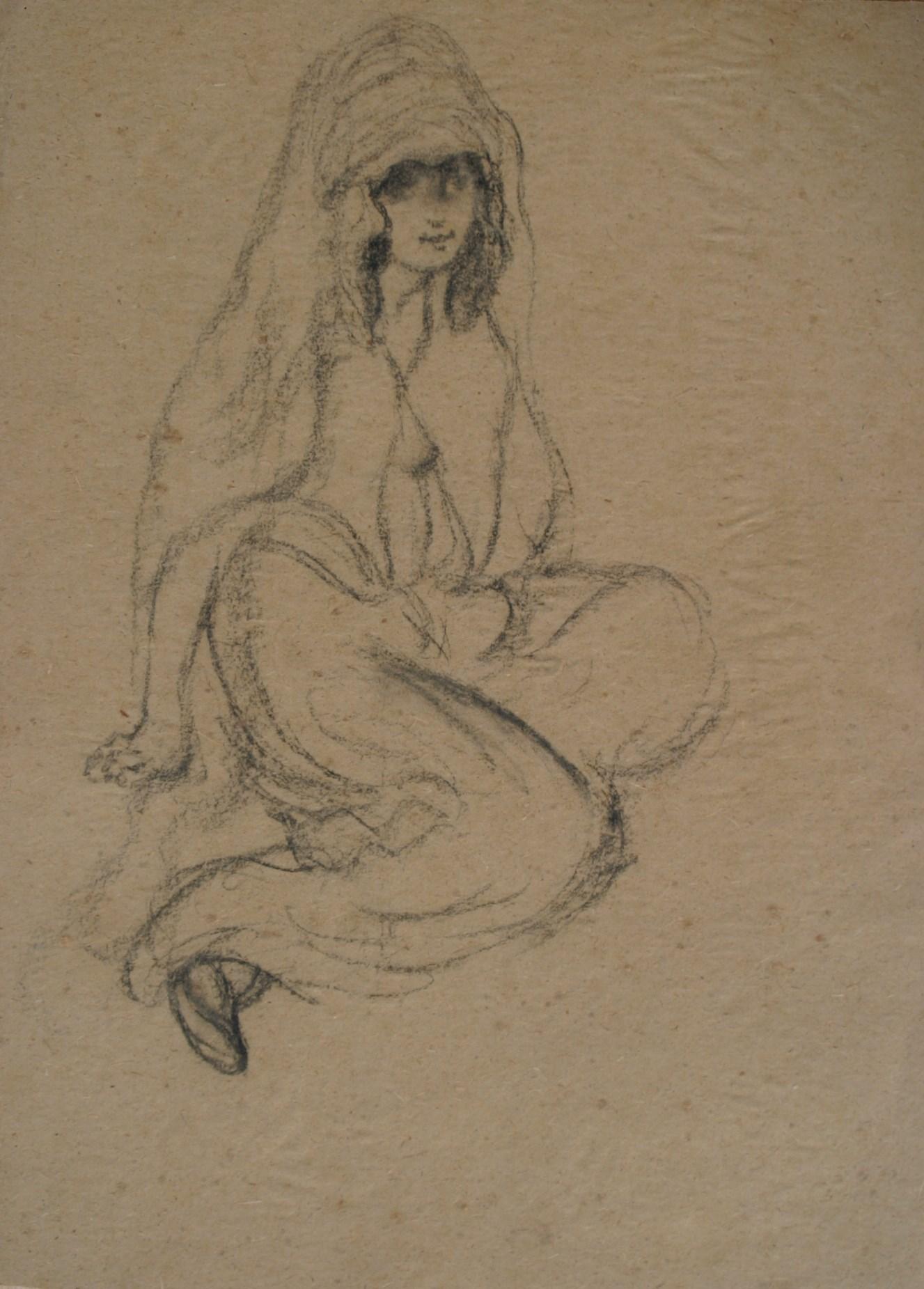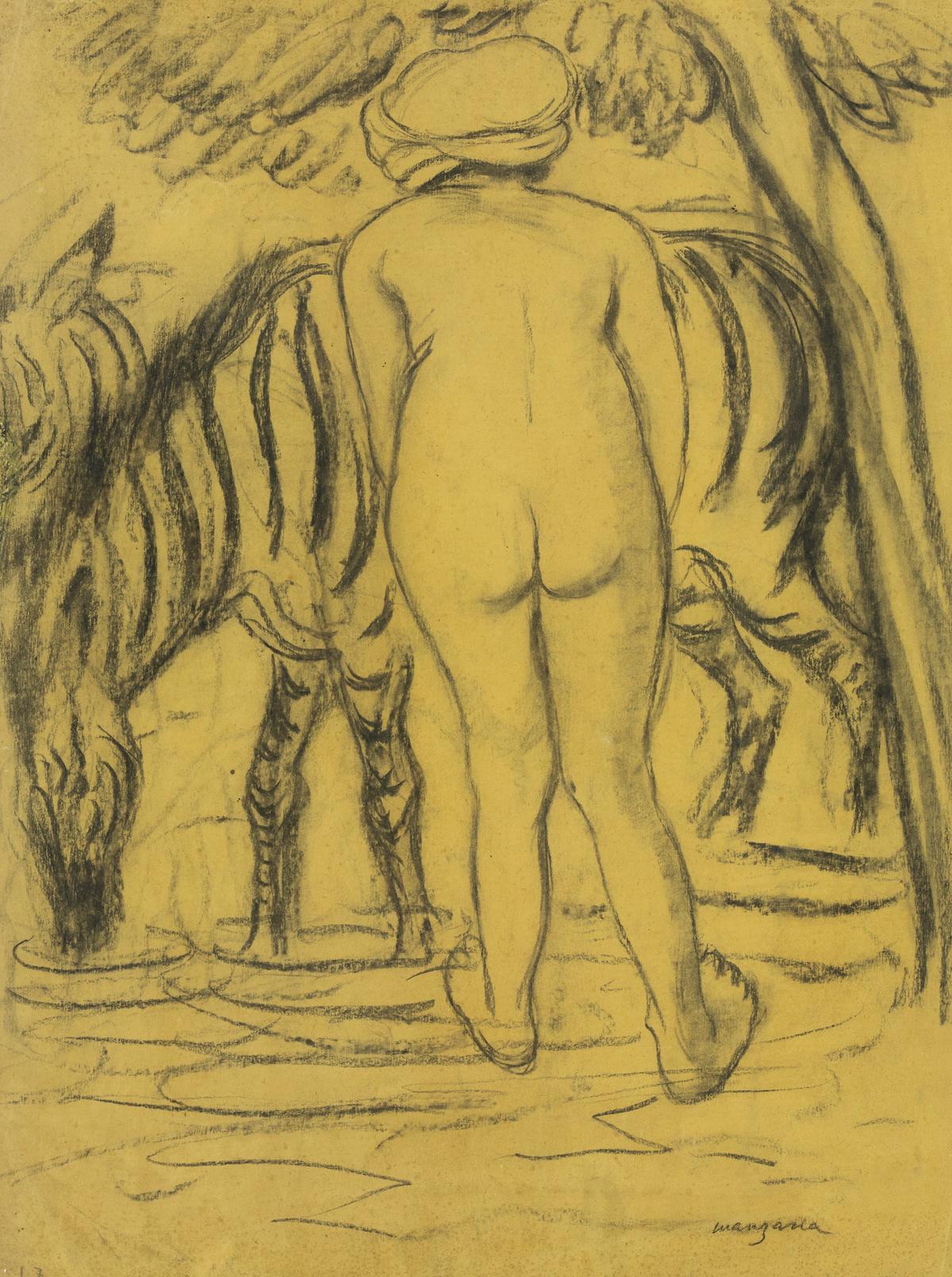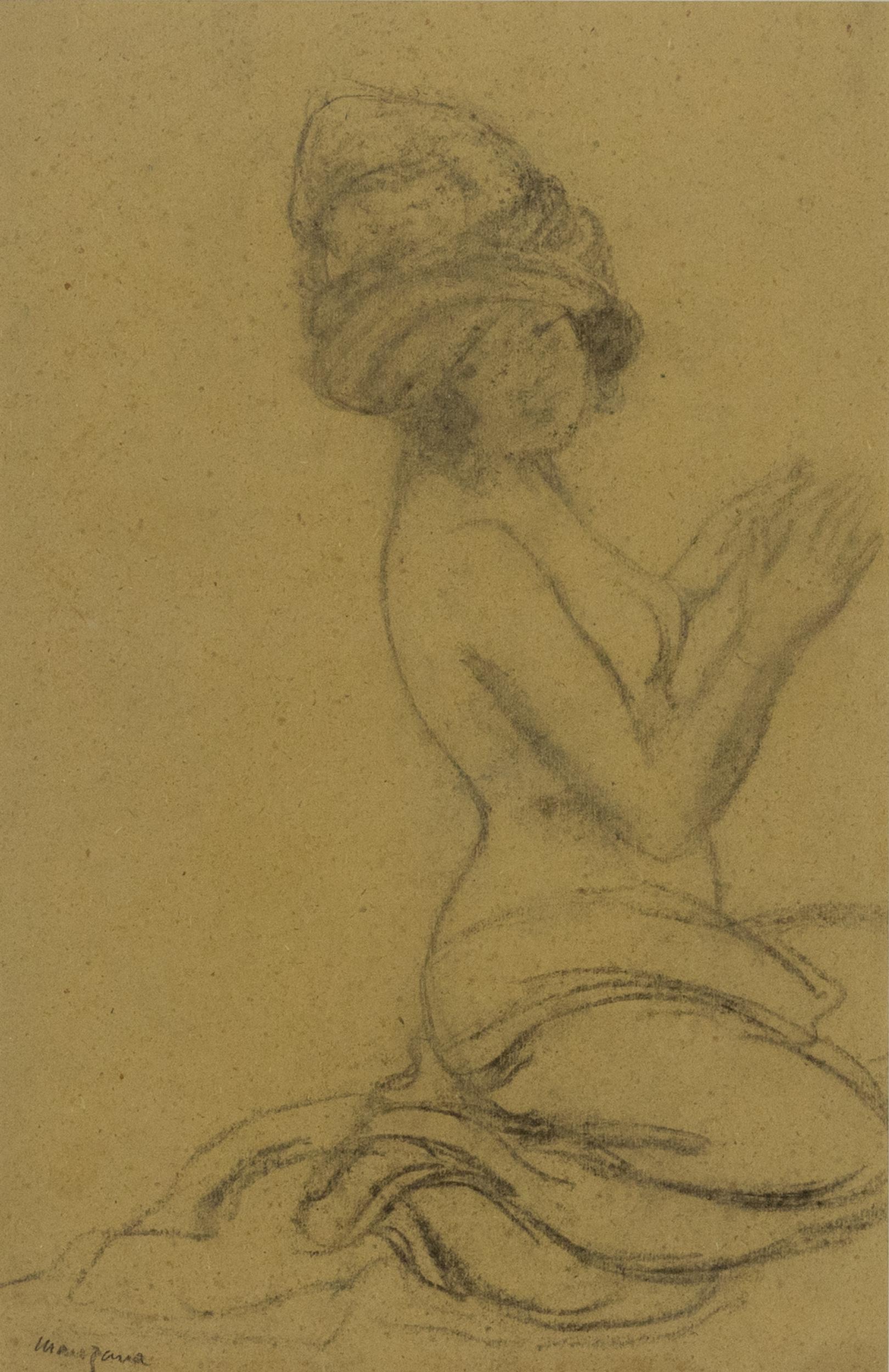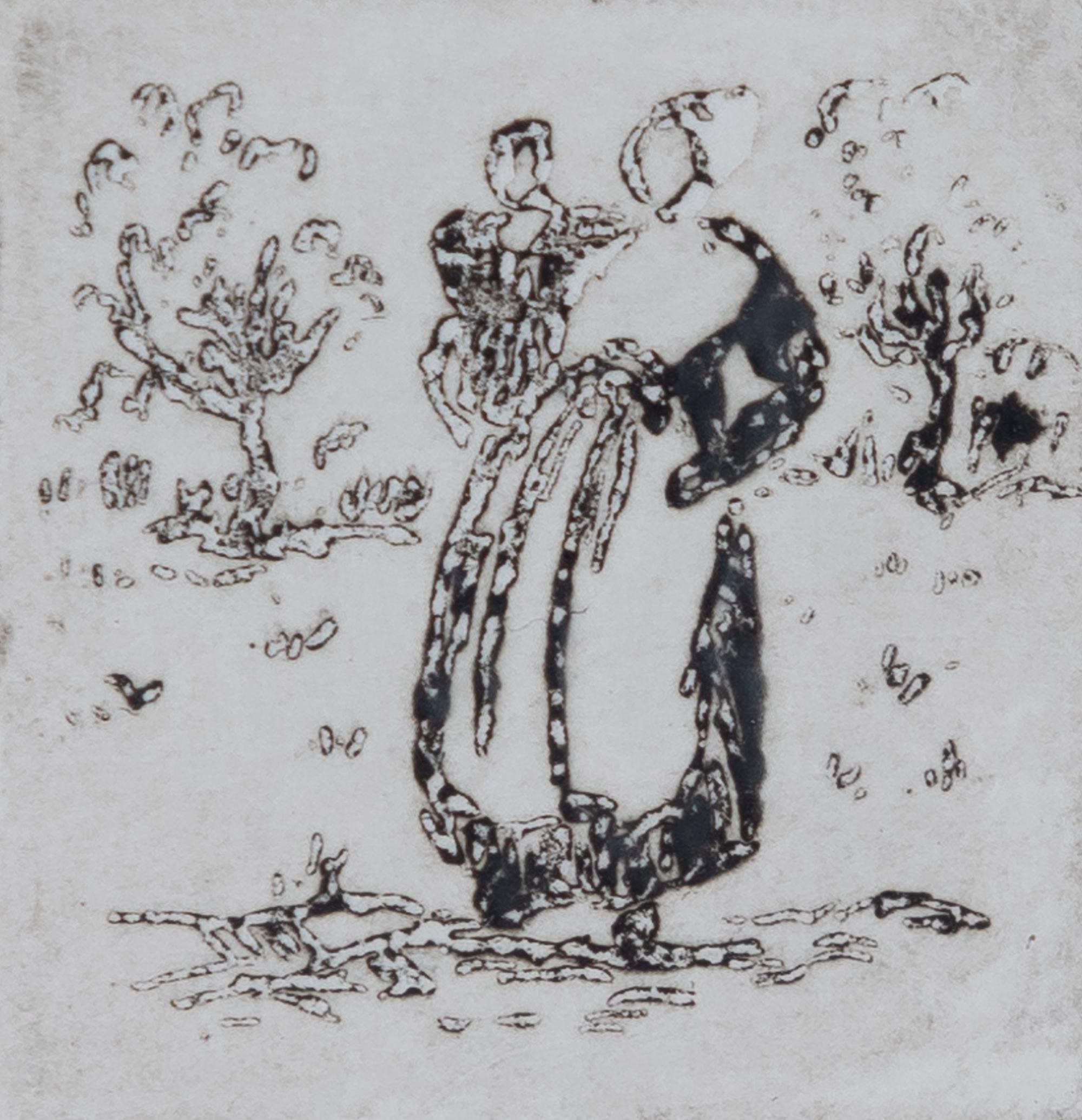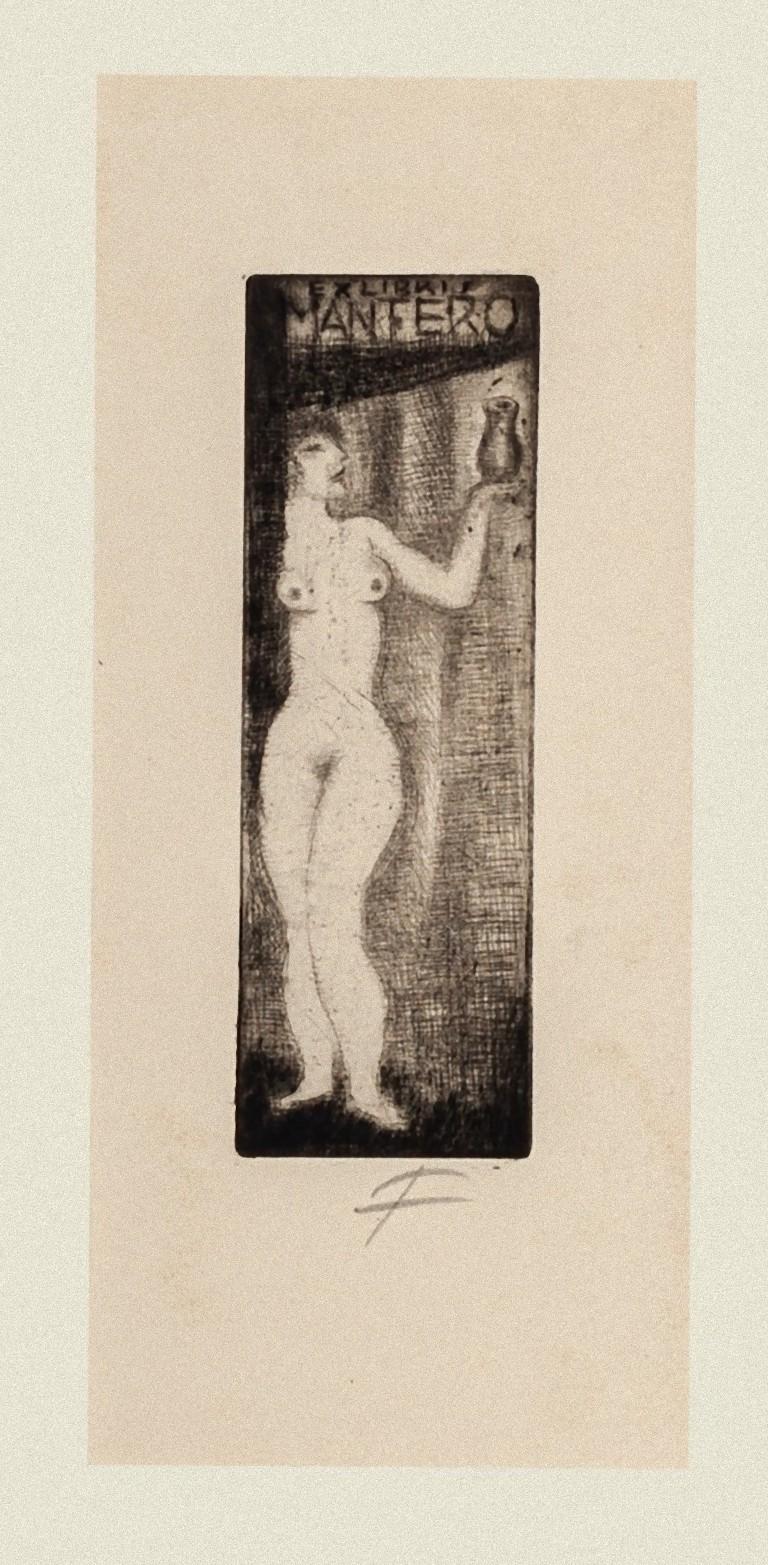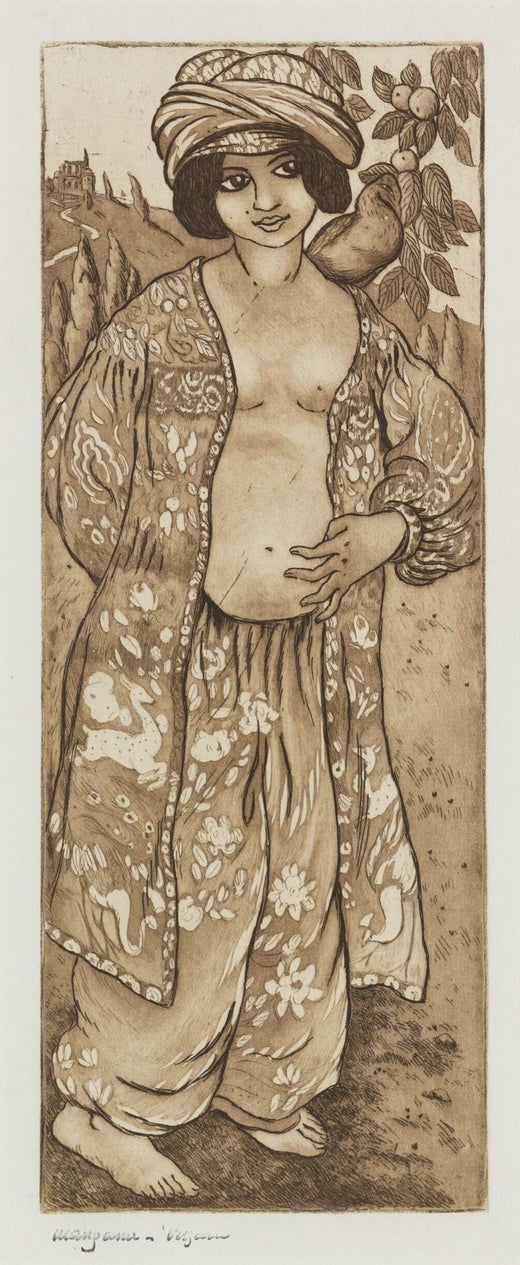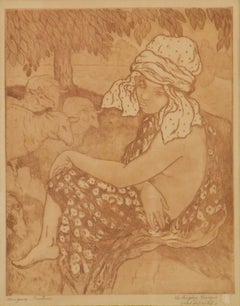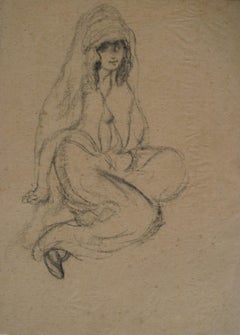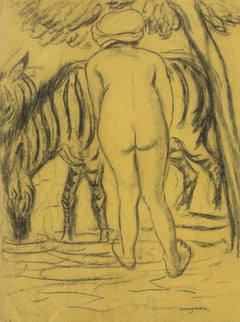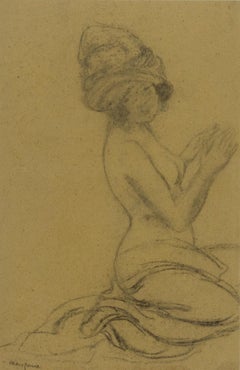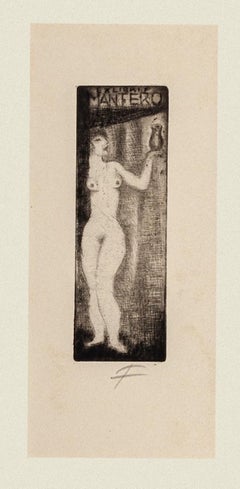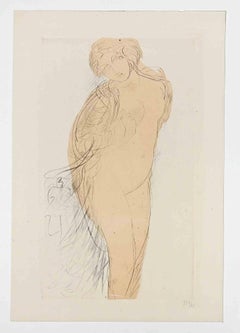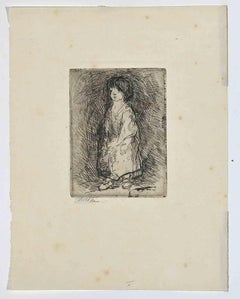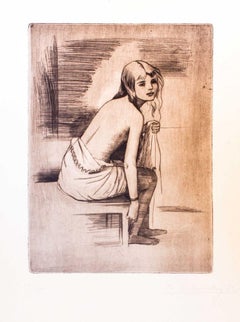Items Similar to Fille au Pigeon, Etching & Aquatint by Georges Manzana Pissarro
Want more images or videos?
Request additional images or videos from the seller
1 of 7
Georges Manzana PissarroFille au Pigeon, Etching & Aquatint by Georges Manzana Pissarro
$2,930.28
£2,150
€2,521
CA$4,042.58
A$4,495.52
CHF 2,361.14
MX$54,962.20
NOK 29,422.10
SEK 27,737.09
DKK 18,814.82
About the Item
Fille au Pigeon by Georges Manzana Pissarro (1871-1961)
Etching & aquatint
36 x 13.8 cm (14 ⅛ x 5 ⅛ inches)
Signed lower left
Provenance
Private Collection, London
Exhibition
Fort Lauderdale, Museum of Art, Camille Pissarro and his Descendants, January - April 2000, No. 144
Artist biography
Like all second-generation Pissarro artists, Georges Henri ‘Manzana’ Pissarro initially worked under a pseudonym. Born in 1871, Manzana was the third of Camille Pissarro’s seven children, adopting the name ‘Manzana’ in 1894 after the maiden name of his maternal grandmother. It was not until around 1910, to honour his deceased father, that he employed his family name when signing his work.
Manzana studied with his father from an early age and spent his formative years surrounded by the distinguished artists associated with the Impressionist movement – Claude Monet, Paul Cézanne, and Paul Gauguin – who frequented the Pissarro home in Éragny. At his father's side he learnt not only to handle brush and pencil but also to observe nature and its changing qualities.
Subjected to rich and diverse influences, Manzana became a prolific and versatile artist, working with oil, pastel and watercolour as well as etchings, lithography and stencils. As a young man he adopted his father's purely Impressionist style and produced a series of landscapes around Éragny. He exhibited Impressionist works at the Salon d'Automne and the Salon des Indépendants, as well as Durand Ruel and Druet galleries in Paris in the early 1900s.
In 1906 his work began to evolve. Inspired by Dr Mardus’ French translation of ‘A Thousand and One Nights’, Manzana embarked on a grand project to publish his own illustrated version of these magical tales. This pulled Manzana into the umbrella of the decorative arts movement where he flourished creating tapestries, glassware, furniture, ceramics and metal work, all inspired by Orientalism and often incorporating gold, silver and copper paint. In 1907 he had his first exhibition of decorative works at Vollard but it was the 1914 exhibition at the Musée des Arts Décoratifs in Paris which dramatically boosted his career. Here he exhibited 311 works including tapestries, carpets, furniture, glassware, decorative paintings, etchings and lithographs.
The subsequent years were filled with bright ideas, gilded costumes and a glittering lifestyle as Manzana navigated the 20s and 30s between Les Andelys and Paris, spending many summers in Brittany. These culminated in a series of colourful yet delicate new works which Manzana exhibited prolifically. When war broke out in 1939 Manzana moved with his family to Casablanca, where he remained until 1947. Manzana was married and widowed three times. The last years of his life were spent in Menton with his son Félix who was also an accomplished artist. There Manzana returned to the Impressionist tradition of his early years, painting the serene landscapes that surrounded him.
Georges Manzana Pissarro
Like all second-generation Pissarro artists, Georges Henri ‘Manzana’ Pissarro initially worked under a pseudonym. Born in 1871, Manzana was the third of Camille Pissarro’s seven children, adopting the name ‘Manzana’ in 1894 after the maiden name of his maternal grandmother. It was not until around 1910, to honour his deceased father, that he employed his family name when signing his work. Manzana studied with his father from an early age and spent his formative years surrounded by the distinguished artists associated with the Impressionist movement – Claude Monet, Paul Cézanne, and Paul Gauguin – who frequented the Pissarro home in Éragny. At his father's side he learnt not only to handle brush and pencil but also to observe nature and its changing qualities. Subjected to rich and diverse influences, Manzana became a prolific and versatile artist, working with oil, pastel and watercolour as well as etchings, lithography and stencils. As a young man he adopted his father's purely Impressionist style and produced a series of landscapes around Éragny. He exhibited Impressionist works at the Salon d'Automne and the Salon des Indépendants, as well as Durand Ruel and Druet galleries in Paris in the early 1900s. In 1906 his work began to evolve. Inspired by Dr Mardus’ French translation of ‘A Thousand and One Nights’, Manzana embarked on a grand project to publish his own illustrated version of these magical tales. This pulled Manzana into the umbrella of the decorative arts movement where he flourished creating tapestries, glassware, furniture, ceramics and metal work, all inspired by Orientalism and often incorporating gold, silver and copper paint. In 1907 he had his first exhibition of decorative works at Vollard but it was the 1914 exhibition at the Musée des Arts Décoratifs in Paris which dramatically boosted his career. Here he exhibited 311 works including tapestries, carpets, furniture, glassware, decorative paintings, etchings and lithographs. The subsequent years were filled with bright ideas, gilded costumes and a glittering lifestyle as Manzana navigated the 20s and 30s between Les Andelys and Paris, spending many summers in Brittany. These culminated in a series of colourful yet delicate new works which Manzana exhibited prolifically. When war broke out in 1939 Manzana moved with his family to Casablanca, where he remained until 1947. Manzana was married and widowed three times. The last years of his life were spent in Menton with his son Félix who was also an accomplished artist. There Manzana returned to the Impressionist tradition of his early years, painting the serene landscapes that surrounded him.
About the Seller
5.0
Recognized Seller
These prestigious sellers are industry leaders and represent the highest echelon for item quality and design.
Gold Seller
Premium sellers maintaining a 4.3+ rating and 24-hour response times
Established in 1964
1stDibs seller since 2015
104 sales on 1stDibs
Typical response time: 2 hours
Associations
Society Of London Art Dealers
- ShippingRetrieving quote...Shipping from: London, United Kingdom
- Return Policy
Authenticity Guarantee
In the unlikely event there’s an issue with an item’s authenticity, contact us within 1 year for a full refund. DetailsMoney-Back Guarantee
If your item is not as described, is damaged in transit, or does not arrive, contact us within 7 days for a full refund. Details24-Hour Cancellation
You have a 24-hour grace period in which to reconsider your purchase, with no questions asked.Vetted Professional Sellers
Our world-class sellers must adhere to strict standards for service and quality, maintaining the integrity of our listings.Price-Match Guarantee
If you find that a seller listed the same item for a lower price elsewhere, we’ll match it.Trusted Global Delivery
Our best-in-class carrier network provides specialized shipping options worldwide, including custom delivery.More From This Seller
View AllPrint by Georges Manzana Pissarro 'La Bergère Turque' (The Turkish Shepherdess)
By Georges Henri Manzana Pissarro
Located in London, GB
'La Bergère Turque' (The Turkish Shepherdess) by Georges Manzana Pissarro (1871-1961)
Etching
33.5 x 27 cm (13 ¼ x 10 ¾ inches)
Signed lower left, Manzana Pissarro, titled and inscri...
Category
1920s Post-Impressionist Animal Prints
Materials
Etching
Oriental Woman, Charcoal Painting by Georges Manzana Pissarro
By Georges Manzana Pissarro
Located in London, GB
SOLD UNFRAMED
Oriental Woman by Georges Manzana Pissarro (1871-1961)
Charcoal on paper
48 x 32 cm (18 ⅞ x 12 ⅝ inches)
This work is accompanied by a certificate of authenticity fr...
Category
1910s Art Deco Drawings and Watercolor Paintings
Materials
Charcoal
Jeune Femme de Dos au Zèbre by Georges Manzana Pissarro, circa 1915
By Georges Manzana Pissarro
Located in London, GB
Jeune Femme de Dos au Zèbre by Georges Manzana Pissarro (1871 - 1961)
Charcoal on paper
66 x 49 cm (26 x 19 ¼ inches)
Signed lower right, Manzana
Executed circa 1915
This work is ac...
Category
1910s Art Deco Nude Drawings and Watercolors
Materials
Paper, Charcoal
Une Femme Turque by Georges Manzana Pissarro - Work on paper
By Georges Henri Manzana Pissarro
Located in London, GB
Une Femme Turque by Georges Manzana Pissarro (1871-1961)
Charcoal on paper
47 x 30.5 cm (18 ¹/₂ x 12 inches)
Signed lower left, manzana
Executed circa 1910
This work is accompanied ...
Category
1910s Post-Impressionist Figurative Drawings and Watercolors
Materials
Charcoal
Mère et enfant by Lélia Pissarro - Etching
By Lelia Pissarro
Located in London, GB
Mère et enfant by Lélia Pissarro (b. 1963)
Etching
3 x 3 cm (1 ¹/₈ x 1 ¹/₈ inches)
Signed lower left, Lélia Pissarro
Inscribed lower right: E.A (artis...
Category
21st Century and Contemporary Impressionist Figurative Prints
Materials
Etching
Odette aux seins nus by Georges Manzana Pissarro - Mixed Media Print
By Georges Manzana Pissarro
Located in London, GB
Odette aux seins nus by Georges Manzana Pissarro (1871 - 1961)
Mixed media and gold on paper
31.5 x 42.3 cm (12 ³/₈ x 16 ⁵/₈ inches)
Signed lower right, Manzana.
Executed circa 1910...
Category
1910s Nude Drawings and Watercolors
Materials
Gold
You May Also Like
Figure - Original Etching by Michel Fingesten - Early 20th Century
By Michel Fingesten
Located in Roma, IT
Figure is an original etching artwork realized by Fingesten.
The state of preservation is good except for a line of folding.
Stamp on the rear "MICHEL FINGESTEN"
The artwork repre...
Category
Early 20th Century Symbolist Figurative Prints
Materials
Etching
Woman - Original Etching by Jeanne Bardey - Early 20th Century
By Jeanne Bardey
Located in Roma, IT
Woman is an original etching realized in Early 20th Century after Auguste Rodin by French artist Jeanne Bardey (1872 - 1954)
Numbered.Edition, 9/25.
Good conditions.
Jeanne Barde...
Category
Early 20th Century Modern Figurative Prints
Materials
Etching
The Little Bohémienne - Original Etching By Bernard Naudin- Early 20th Century
Located in Roma, IT
The Little Bohémienne is an Original Etching realized by Bernard Naudin (1876-1946).
The artwork is in good condition on a yellowed paper, included a white cardboard passpartout (50...
Category
Early 20th Century Modern Figurative Prints
Materials
Etching
Young Model - Original Etching by Theodore Stravinsky - 1932
By Theodore Stravinsky
Located in Roma, IT
Image dimensions: 30 x 22 cm
Hand signed lower right, from the edition of 15 prints. A very rare etching by Theodore Stravinsky.
Théodore Strawinsky (St. Petersburg, 1907 – Genève,...
Category
1930s Figurative Prints
Materials
Etching
La Fable et la Verité - Original Etching - Early 20th Century
Located in Roma, IT
Image dimensions: 16 x 7 cm.
Fable and Truth is an original etching on paper, realized by an Anonymous artist of the XX century, titled in French on the bottom center.
The State o...
Category
Early 20th Century Figurative Prints
Materials
Etching
Young Woman from Lucerne - Etching - 19th Century
Located in Roma, IT
Young woman of Lucerne is an original artwork realized by Anonymous artist in 19th Century.
Mixed colored etching hand-watercolored by the artist.
Includes frame 20 x 14 cm
Good c...
Category
1810s Modern Figurative Prints
Materials
Etching
More Ways To Browse
Pigeon Antique
Art Deco Etching
Maiden Home
Antique Umbrella Handles
Claude Monet Etching
Antique Umbrella Gold
Antique Metal Stencils
Calder Style Sculpture
Japanese Woodblock Prints Hiroshige
Keith Haring 1982
Matisse Cut Outs
Rembrandt Self Portrait Etching
Rembrandt Van Rijn Etching
Salon Cent
Shark Sculpture
Vintage Austrian Poster
Vintage Bar Posters
Vintage Political Posters
